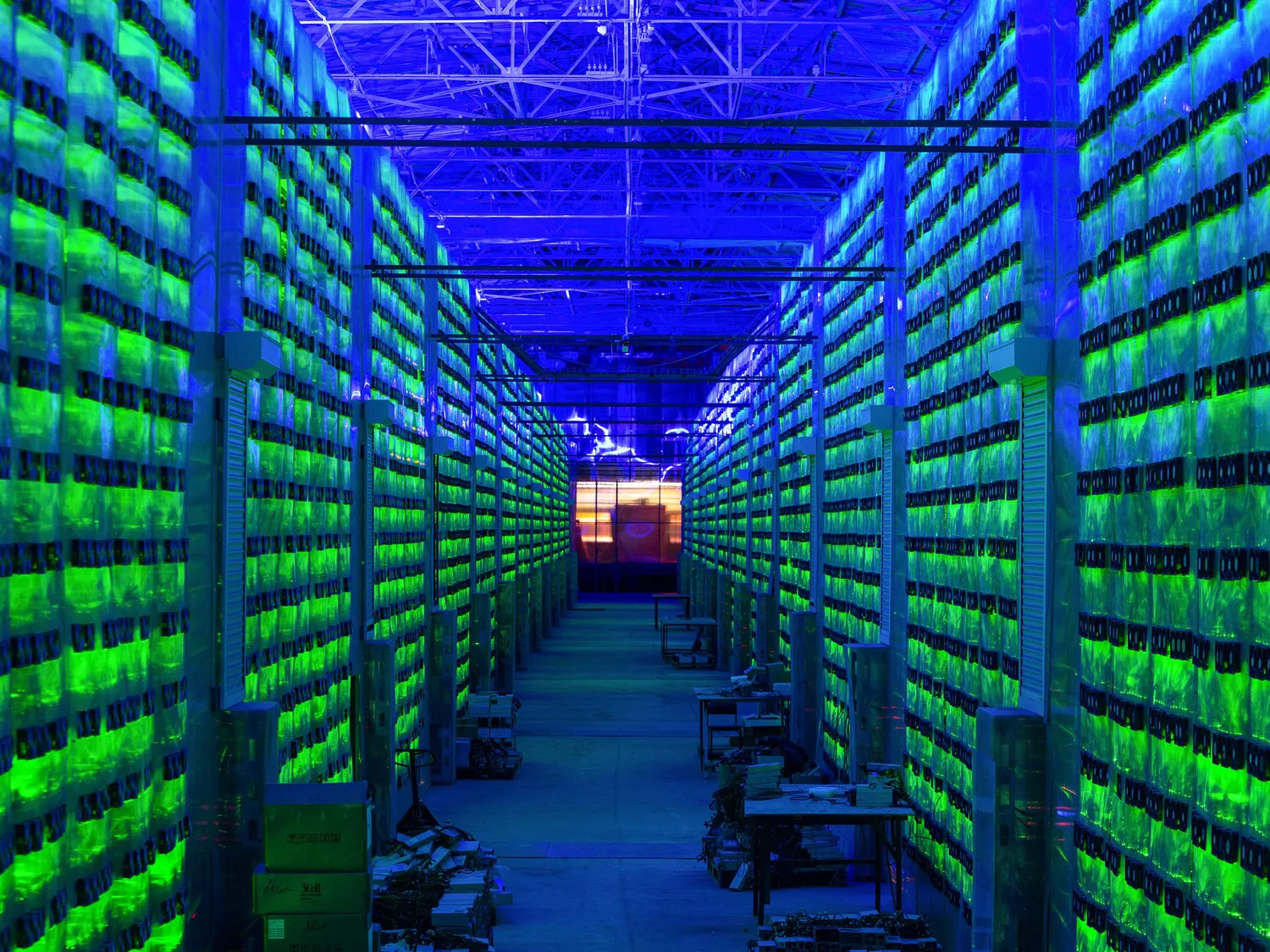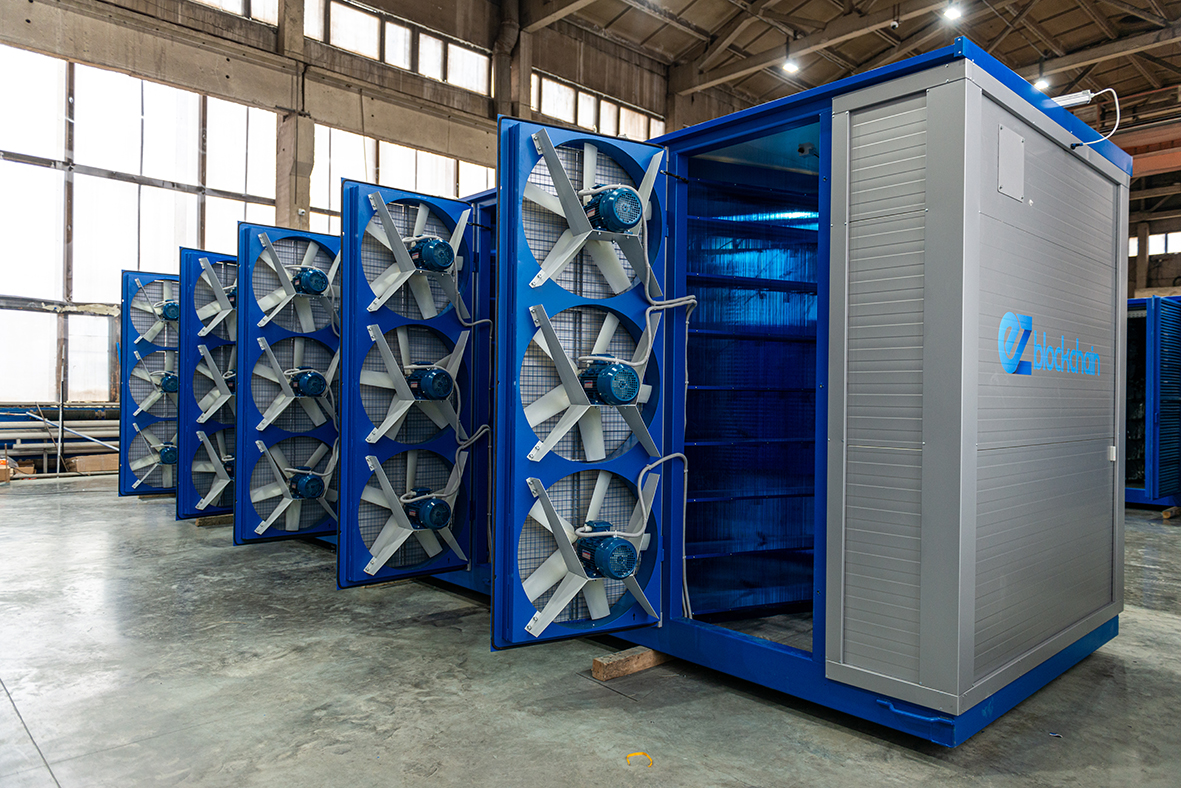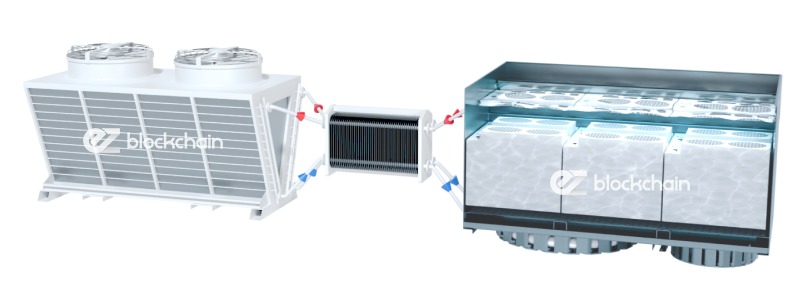Stay up to date with the latest news, announcements, and articles.
So, how can this problem be conquered? What mining equipment is often used? What is the best method for cooling mining rigs? Read on as we dive deep into the best mining practices for maximum profit.
Bitcoin Mining And Evolution Of Mining Equipment

Bitcoin mining is the process of creating new bitcoins by using specialized equipment to solve complex mathematical puzzles. Also, people who mine new bitcoins are referred to as miners and are rewarded with bitcoins for their contributions to the network. Due to the constantly adjusting mining difficulty as well as the intense competition between miners, there is a constant need for specialized equipment.
In the constant evolution of Bitcoin mining, various generations of equipment used are:
- CPU Mining(2009-2010):
This method of mining was adopted in the early years of the Bitcoin network. Due to the lack of competition, the computational energy required to create new blocks and earn rewards was quite low. Average personal computers were often utilized in this first generation. As more miners began to join the network, the increase in competition resulted in the innovation of the Graphics Processing Unit.
2. GPU( Graphics Processing Unit):
This specialized equipment was adopted for mining between 2010 and 2011. The innovation of this new hardware resulted in 6 times more efficiency while only doubling in cost. However, the innovation did not stop there. The FPGA was introduced the next year to further aid mining activities.
3. FPGA(Field Programming Gate Arrays):
FPGAs quickly overshadowed the GPUs. They were able to compute the mathematical operations required to mine bitcoin twice as fast as the highest grade GPU. These features resulted in massive adoption of the technology. However, they were labor intensive and needed both software and hardware configuration. Once again, a new innovation in mining equipment was required.
4. ASIC miner:
In 2013, a China-based computer hardware manufacturer called Canaan Creative released the first set of application-specific integrated circuits (ASICs) for bitcoin mining. Unlike the previous generations, ASICs were designed solely for Bitcoin mining. All software and hardware were pre-designed strictly to compute those calculations necessary to create new bitcoin blocks. The efficiency of ASICs is unmatched by any equipment from the previous generations.
Following the creation of the ASIC, there has been no radical innovation in Bitcoin mining. However, there has been a steady reduction in chip size. The size of ASIC chips which started off at a size of 130 nm in 2013 has shrunk considerably to 7nm in the latest hardware models.
Most Commonly Used Mining Equipment

A lot has changed in the cryptocurrency mining industry since 2013 and the increase in adoption of Bitcoin has only served to make mining more competitive. Miners are constantly upgrading their equipment to have an edge and stand a chance to win rewards.
Various factors are often considered in selecting the appropriate mining rig. They are :
- Hash rate:
This is a measure of how fast a cryptocurrency miner’s machine processes complex computations. Hash rates are measured by the number of calculations per second, which can be as high as the quintillions. Miners who own mining rigs with higher hash rates are more likely to mine new blocks. It is perhaps the most important factor to determine mining success.
- Power consumption:
Bitcoin mining is an energy-intensive process. This means that mining rigs consume a lot of electricity. When considering the average cost of electricity, the expense of running a mining rig is almost discouraging. Many miners are switching to renewable sources of energy to reduce costs and to make mining sustainable.
- Overheating:
This is a major problem experienced by all miners. Mining equipment is constantly running and is therefore prone to overheating. Constant overheating often leads to a breakdown which affects profitability. This problem is a major money drain for many miners.
- Device Cost:
Although mentioned last, this factor is very important. The cost of mining rigs continues to rise as more and more people compete to mine blocks and gain rewards. Moreover, there is a constant need to upgrade equipment which means demand is ever increasing thus driving up costs. Miners must carefully consider their expected profit before indulging in the purchase of the latest equipment.
The most effective and commonly adopted mining equipment are:
- Bitmain AntMiner S7:
This is one of the most popular devices used in Bitcoin mining. The AntMiner S7 is recognized for its low power consumption and efficiency. However, the device is especially sensitive to temperatures and often overheats. Overall, the S7 is most suitable for miners based in cooler climates, as cooling costs can significantly cut into profitability in warmer regions
- AvalonMiner 741:
This is an affordable powerful miner most suitable for small-scale Bitcoin miners. It has an average hash rate of 11.5 TH/s and is equipped with an innovative Air cooling mechanism. It is far more energy-efficient than other mining equipment at its price range.
- Dragonmint T1:
This is an impressively powerful miner with an advantage over Bitmain builds. It has a remarkable hash rate of 16TH/s and is incredibly energy efficient. However, this unit is also prone to overheat which results in halted operations.
- Avalon6:
This is currently the best Bitcoin miner for home mining or hobby Bitcoin mining. Although it has a low hash rate of 3.5 TH/s, it delivers impressive functionality with a low noise profile. It also has a reasonable power draw at an affordable price point and is equipped with complex temperature control to prevent overheating.
A consistent problem in all the aforementioned mining rigs is a tendency to overheat. Even under room temperature, the equipment tends to shut down and this often worsens during summer. So what is the best practice for miners? What are the best ways to keep mining gear effective? Let’s find out.
The Traditional Method Of Cooling: Air Cooling

In a bid to reduce overheating in mining rigs, most miners adopted a method referred to as Air Cooling. This method involves the use of ventilation fans and atmospheric air to regulate the temperature of mining equipment. To increase the effectiveness of air cooling, energy-sapping refrigeration components like chillers and air handlers are often needed. But is this method effective? Is there a better way to improve efficiency in mining rigs?
Immersion Cooling: Conquering The Flaws Of Air Cooling
The concept of immersion cooling has existed since 2006 but was only recently adopted for mining activities. As the name suggests, specialized Bitcoin mining equipment such as ASICs are submerged or immersed in cooling fluid. This technique is very effective and around 40% of the heat is recaptured and used to power the mining rig. It also boasts about 10 times the heat rejection capacity of air cooling. This method is being increasingly adopted due to its numerous advantages over air cooling.

Some of these advantages are :
- Higher Hash Rate:
The importance of hash rates in cryptocurrency mining can not be overstated. However, air cooling often involves the installation of ventilation fans which reduce hash rate. By removing fans and installing immersion ware instead, immersion cooling achieved a dramatic increase in hash rate ranging from 25-55% for various mining equipment.
- Higher Efficiency:
This advantage is linked to the increase in hash rate. By optimizing the hash rate of each piece of equipment, immersion cooling reduces the number of devices needed without compromising productivity. This is a major benefit for miners.
- Reduction in power consumption:
A major contributor to energy consumption in mining is ASIC fans and facility fans. In switching to immersion cooling, miners no longer require those energy-draining equipment and can save up to 50% in energy costs. The reduction in electricity consumption also allows miners to invest in more mining equipment if they wish.
- Maintenance and Lifespan:
A major side-effect of overheating is the constant breakdown of equipment. Also, air cooling often results in contamination and corrosion of equipment. Because of the buildup in contamination, mining rigs often become clogged and then overheat. Immersion cooling eliminates all these. It supports ASICs operating at maximum capacity and boosts lifespan. In comparison to air cooling, hardware lifespan is increased by 4-5 years.
- Reduction in Expenses:
Although immersion cooling initially appears more expensive than air cooling, this is quickly proven wrong. By factoring in the reduced cost of maintenance and purchase of new equipment as well as considering the reduction in electricity bills, it is obvious that immersion cooling wins. This cooling method offers a mind-blowing 80% cost reduction for double the efficiency.
When weighed on a scale, it is quite obvious that air cooling is inadvisable in comparison to immersion cooling containers. Apart from its numerous advantages, immersion cooling also provides a clean, quiet, stable, and comfortable working environment.
Immersion cooling is a major technological leap in the cryptocurrency mining industry
Although not without flaws, the immersion cooling container promises a more efficient method of mining while supporting the sustainable movement in cryptocurrencies.
If you are looking to maximize the hash rate of your miners all while increasing your ROI, there is no better place than at EZ Blockchain.
At EZ Blockchain, our Immersion cutting-edge technology allows us to increase hash rates, cut down on heat and noise generation and increase the longevity of equipment.
It is our mission to breach the gap between the energy sector and the blockchain ecosystem by innovative solutions to the global waste energy problems. We revolutionize crypto mining through the introduction of our immersion liguid cooling container as well as solar and wind crypto mining services.
EZ Blockchain is an innovative company that believes in the utilization of waste energy and that solving problems associated with gas flaring and stranded gas problems is a true win-win for both the energy and crypto industries.
Fill out a form and our bitcoin mining expert will contact you.
FREE CONSULTATIONchoose
a miner
profit and
understand data?
business remotely
with EZ Blockchain?
Fill out a form and our bitcoin mining expert will contact you.











